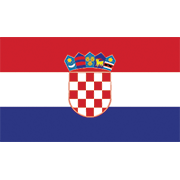Fiscal subject related
- On December 1, 2022, the first packages of euro coins with Croatian motifs will become available to citizens. A package of 33 coins with a total value of 13.28 euros will be sold in branches of banks, Fina, and Croatian Post at a price of 100,00 HRK. Croatian euro coins will not be able to be used as a means of payment either in Croatia or in the Eurozone before January 1, 2023.
- The pre-supply of euro banknotes and coins begins on December 27, 2022, for micro-entrepreneurs who, by signing a contract with the bank and providing a guarantee, can receive 10,000 euros so that trade can resume on January 1, 2023.
- On December 31, 2022, and January 1, 2023, ATMs will not be able to withdraw cash, and payment transactions will not function until January 2. Some banks have admitted that they won't even work with cards, so it's a good idea to arm yourself with cash in the days before the New Year.
- On January 1, 2023, the euro becomes a legal tender in Croatia. Kuna is converted into euros according to the fixed exchange rate determined by the Council of the European Union in July 2022. According to the fixed conversion rate, 1 euro is worth 7.53450 HRK, and this is the only rate at which the exchange of kuna for euros is legal after January 1, 2023.
- January 1–January 14, 2023: There is a period of dual circulation during which both the kuna and the euro are legal means of payment. Still, in accordance with the law regulating the introduction of the euro, citizens should be able to pay in kuna and have the rest of the money whenever possible returned to them in euros.
- During January 2023, salaries for December will be paid in euros, and it will be the first time salaries have been paid in euros in the history of Croatia.
- December 31, 2023, is the last day on which the Croatian kuna will be in the eyes of consumers, since the dual display of prices that began on September 5, 2022, ends on that day.
- January 1, 2024, is the day kuna banknotes and coins can be exchanged into euros exclusively at the Croatian National Bank.
- December 31, 2025, is the last day on which Croatian kuna coins can be exchanged for euros exclusively at the Croatian National Bank. After that date, the Croatian kuna and lipa coins will no longer have a monetary value because they will not be exchanged for the euro, but they will retain their numismatic value.
Other news from Croatia
New document was uploaded: Fiscalization - Technical specification for users (HR)
 Croatia
Author: Kristina Dosen
Croatia
Author: Kristina Dosen
This technical specification outlines the procedures for integrating with the Croatian Tax Administration’s Fiscalization Information System (CIS). It defines how businesses must electronically submit invoices, self-service transactions, and tips (gratuities) in real time using XML messages over secure web services. Read more



New document was uploaded: S4F backoffice patch
S4F backoffice patch is intended for users who have already installed S4F backoffice and are intended to update existing installations to latest version. To do so apply only patches that are marked with version number that is newer than your currently installed instance of backoffice. Read more



Overview: New Draft of the New Fiscalization Act in Croatia – Key Changes
 Croatia
Author: Nikola Novković
Croatia
Author: Nikola Novković
Croatia has released a draft of the new Fiscalization Act for public consultation, proposing major changes for both B2C and B2B transactions. All invoices issued to consumers must now be fiscalized, regardless of payment method—including online payments via Stripe, PayPal, or bank transfers. Read more



TLv6 Implementation Marks Significant Shift in EU’s Trust List Format
A new EU Trust List format, TLv6, will officially replace TLv5 in May 2025 as part of the updated eIDAS Regulation (EU 2024/1183). It introduces key technical changes like a new URI field, updated signature format, and optional phone number support. Organizations must update their systems to avoid signature validation failures and service disruptions, as TLv5 will no longer be valid once TLv6 take... Read more



Major developments in business are brought by the new law on fiscalization in Croatia!
 Croatia
Author: Nikola Novković
Croatia
Author: Nikola Novković
Croatia's new fiscalization law mandates electronic invoicing for all B2B, B2G, and B2C transactions, starting with VAT payers on January 1, 2026, and extending to non-VAT businesses on January 1, 2027, with a free invoicing application provided. Businesses must register their chosen e-invoice distribution and fiscalization methods between September 1 and December 31 of this year, and specific invoice payments up to 700 EUR must be reported to the Tax Administration via fiscalization messages. Read more



VIDA regulation adopted—what does that mean for business?
The EU adopted the VAT in the Digital Age (ViDA) package on March 11, 2025, introducing major changes to the VAT system starting January 1, 2027. Key reforms include mandatory digital VAT reporting by 2030, new VAT collection rules for online platforms, and expanded One-Stop Shop (OSS) registration to simplify cross-border compliance. Additional measures, such as mandatory e-invoicing, phasing out... Read more



New document was uploaded: S4F backoffice patch
S4F backoffice patch is intended for users who have already installed S4F backoffice and are intended to update existing installations to latest version. To do so apply only patches that are marked with version number that is newer than your currently installed instance of backoffice. Read more


